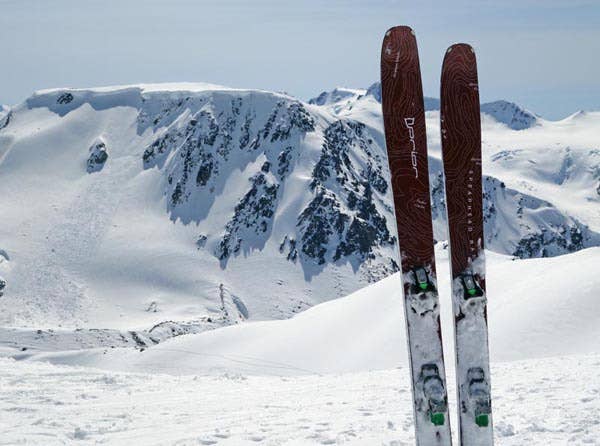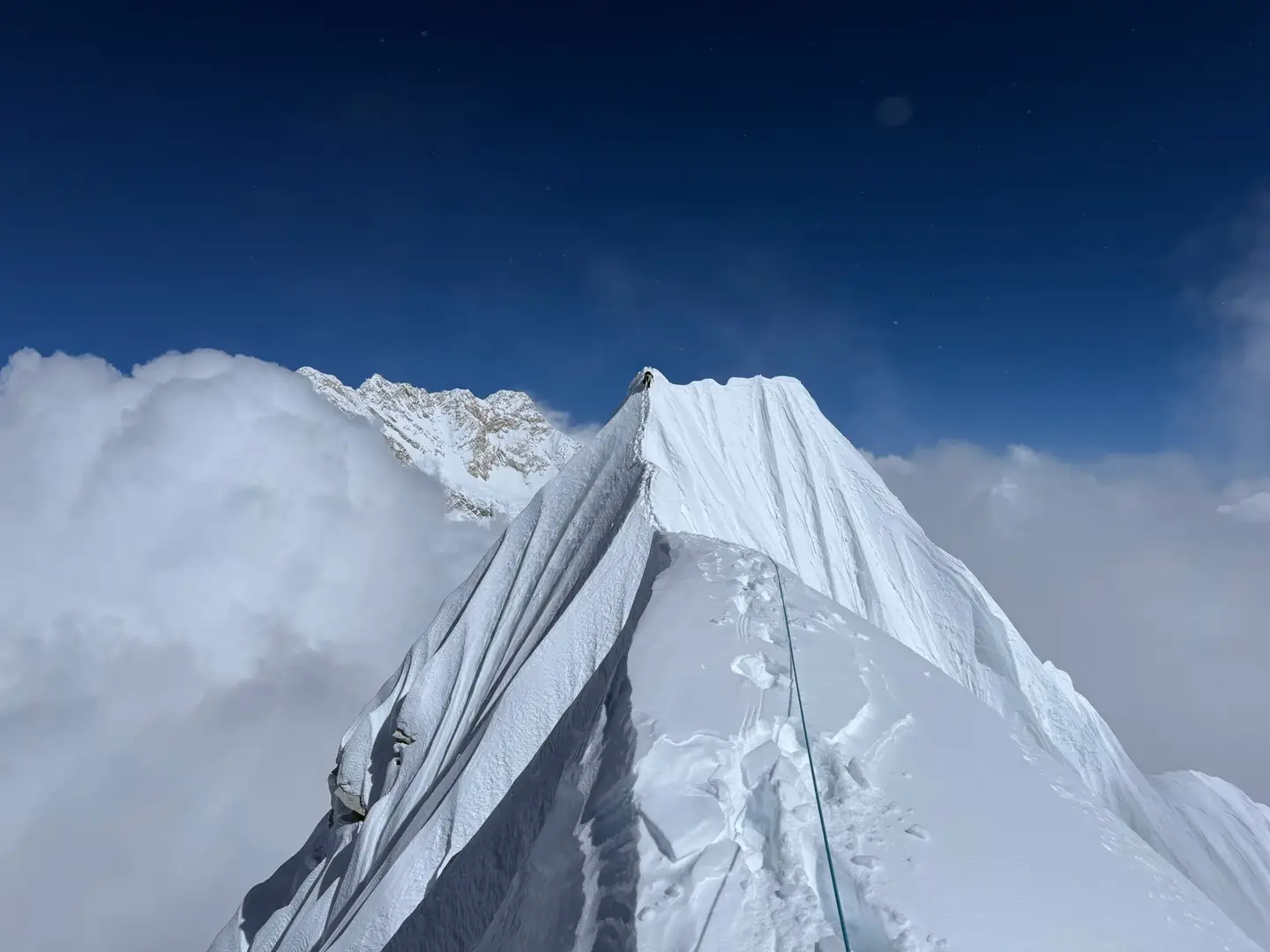

Dynafit Beast 2013 Review
Popular Stories
Part 1 of 2
Introduction
As every hardcore ski forum reader on the Internet knows, Dynafit is releasing a release value 16 binding for the 2013-14ski season. Befitting its name, the Dynafit Beast is a frameless built-tough touring binding oriented for downhill performance yet designed to retain the superior touring capability of tech bindings (less weight underfoot, more natural touring stride etc.)
There's been much discussion about what the binding can and cannot do (TGR forum thread here if you wish to join the discussion). My previous review canvassed tech aspects of the Beast so re-read if you want to delve into the nitty-gritty. The purpose of this full review is to convey impressions after skiing these bindings for the past six weeks.
In summary, the Beast does have some quirks which Dynafit has anticipated addressing in the production version (to be released this fall). The Beast is not just an incremental improvement but a totally new and rather stunningly gutsy design that has serious potential to be a one-binding-to-rule-them all for inbounds and backcountry.
Dynafit Beast 16 - Dynafit Vulcan. The color coordination is euro-tastic and not an accident

Dynafit Beasts mounted to Prior Overlords - East Col, Blackcomb
Personal biases and test conditions:
I weigh 165 lbs and ski mainly in the Coast Mountains of British Columbia in the Whistler area. Toby Salin is the guest reviewer. He is 210lbs and a bulldog power skier of the highest order (although with exceptional technique) and also lives here. Both of us ski in usually in fairly high moisture-content snow, ski about a 100 days a year and prefer bigger skis and boots (Toby more so than I). Most of my skiing is touring while most of Toby's skiing is resort or slackcountry.
Mounting, installation and the metal horseshoe heel fitting
Mounting was a bit of a challenge as jigs are scarce. Much thanks to Matty Richard who helped me mount the Beasts. Per Matty, the paper template provided in-box and a contraption/quasi jig that Eric Hjorleifson put together helped with the mount. No doubt there will be much more guidance when the production versions are publicly launched . In the meantime here are some observations:
• The only thing you need to do differently with your boots is to mount a metal horseshoe-like heel fitting on your boot heel. One criticism of the previous generation of Dynafit bindings is that the old boot heel piece used in combination with such bindings is only held by a wood-screw. When that screw breaks your boot is pretty much shot. The new fittings are held on by three screws. This means that you will have to drill two shallow holes in the boot for the additional fasteners (see picture below). Theoretically this should make for added strength. Note that the new heel fitting can be retrofitted to any tech boot as long as the old fitting can be removed
• Installing the new heel fitting on a boot does not impede it from being used in a Fritschi or Marker touring binding (I would imagine that's the same for a Guardian).
• Because the heel fitting protrudes from the back of the boot I adjusted the heelpiece of the older Dynafits rearwards on its rails so the heel fitting wouldn't hit the heelpiece on touring mode. A full turn of the adjustment screw did the trick.
• Forward pressure was fairly easy to adjust and seemed to be sufficient to hold the heelpiece to the boot. Interestingly Dynafit has received feedback that users would like stronger forward pressure so the production version of the Beast will have increased spring rate (20% stronger) to make the heel piece engage even more forcefully.

Heel mounting plate is an easy swap and involves drilling two shallow holes on the side of the boot. Note that the heel fitting protrudes past the heel piece as compared to previous generation tech heel pieces which are are flush with the heel

The above is a traditional Dynafit heel (Comfort) adjusted for the Vulcan boot sole length. If you leave it correctly adjusted your heel will contact the new heel fitting when the ski is cambered. Back the trad Dynafit heel off about 0.5mm to account for the fact that the heel fitting protrudes from the boot heel by that much. The pins actually engage on the protrusion so release/retention isn't compromised.
Getting into the binding and transitions.
I had quite a few nitpicks about the mechanism for getting in and out of the Beast. I've had a lot of time on Dynafits so am used to Dynafiddling but felt that the Beast could use a few more refinements. My nitpicking should be taken in the context that I'm into uphills and quick transitions although I'm never ever going to put on a one-piece Scholler racing suit.
Basically this is a step in binding. As with all tech bindings step in at the toe then step down at the heel. To get out, hit a switch on the touring lever which releases your toe and wiggle your heel free. To use the binding in tour mode flip down the heel elevator which then moves the heel piece back on a rail so only the toe is locked in.. There's obviously a bit more to this than just that simple explanation so see the video above..
I had the opportunity to speak to Fredrik Andersson, the Salewa engineer who designed the Beast and to clarify the changes Dynafit would make in the production version. Here are my observations and Fred's input (in bolded italics):
• When actuating the toepiece you will have to press down gently on a lever and suspend your boot where you think the toe jaws will clamp (see first picture below). There's nothing in the area marked “hanging space” on which to rest the toe of the boot so it's relatively easy to press down too far and then miss the toe jaws. This is going to be a massive pain in the ass if you're hanging around in a small spot trying to put on your ski.
The “hanging space” will be supported by platforms left and right in the aluminum base plate so you can not press down too far and it'll be easier to actte the toepiece
• In the second and third pictures below the heel piece when in tour mode and the toe lockout mechanism are flush with the ski so you sometimes have to take off your gloves to flip them up. Also, you cannot use a ski pole handle to flip the heelpiece and toe-lockout mech up as there's not enough space for the ski pole to get purchase. It would speed up transitions if if you could use your pole to flip the levers from ski mode to walk mode and rip skins without having to take off your skis..
The heel raiser holding down the brake will get a ledge for deactivating walk mode with the ski pole. The lockout mechanism in the toe is getting reworked as well but we need to keep it fairly flush with the ski to keep it from being damaged.
• It seems to take a fair amount of effort to push open the toe jaws so you can get into the binding. It's enough effort you can see poles bending.
Sign Up for the TGR Gravity Check Newsletter Now
For the production Beast there will be a plastic plate between the metal parts to reduce friction and lower the force required to open the binding. The opening button has been moved rearwards to get better leverage. We have also increased the spring rate to make the binding close better which has the opposite effect on the opening force but all together the production bindings will take less effort to open, especially when toepiece parts are filled with snow and ice.

When actuating the toepiece you will have to press down gently on a lever and suspend your boot where you think the toe jaws will clamp. There's nothing in the area marked “hanging space” on which to rest the toe of the boot so it's relatively easy to press down too far and then miss the toe jaws.

Heel piece in touring mode

Toe piece lockout in touring mode.
Elasticity and positive engagement
As remarked on in my initial review and in the various chatter from TGR forums spray the most looked-for improvement in the Dynafit Beast is downhill touring performance. There's two things that even a light skier like myself finds an issue when on previous generation Dynafits; lack of elasticity and lack of solid engagement.
As to elasticity, previous generation Dynafits are a chattering challenging handful when skiing in firm hardpacked snow. Picture this. Coming back inbounds after touring off into the slackcountry and hitting the resort after everything's been cut-up then refrozen. Feel like your teeth are going to get chattered off your gums? Wonder if your ski will fly off your feet as the shock of every bump and rut is transferred metal-on-metal to your feet and legs? You've discovered the ugly reality of Dynafits. There is little to no small bump absorption and the boot - binding connection feels totally undampened. Together this is what some loosely might call lack of elasticity.
What does it mean when a binding is elastic? This article by Marshal Olson in Blister Gear is a good reference. To paraphrase, a binding which is elastic allows a boot to deflect from a point where the boot is held on the ski (sometimes called the centre) and then either return-to-centre or, if force is sufficient, for the boot to release. The spring tension in a binding controls what force is required for the boot to deflect following a hit and either release or return-to-centre. In almost all bindings, the spring tension is adjustable (release value is related to binding spring tension). So when one says that the Dynafit Beast is adjustable from 8 to 16 that number relates to spring tension. The higher the number, the greater the force required to release from the binding.
Following on this it's no surprise that earlier generation tech 1.0 Dynafits (Verticals, Comforts, Radicals) basically had almost zero elasticity; the toe piece had almost no spring tension while the heel pieces have tiny little wee springs which simply don't have the capacity to absorb or adjust to high delta forces. This is why there's no give or elasticity on previous generation Dynafits and that is why relatively small hits would deflect ones boot enough for the boot to release (this is called pre-release). All the absorption in previous generation Dynafits were in your knees, ankles or the rattling of the fillings in your teeth. Many people (myself included) ran higher release values on our previous generation Dynafits and/or locked the toes out when in high speed chattery snow conditions and/or backed off our speed..
As to positive engagement the previous generation bindings were works of minimalist art that necessarily had compromises. In powder and soft snow the vagueness of the heel engagement isn't readily apparent but consider that previous generation tech bindings spec 5.5 mm gaps at the heel. This is a design consideration to allow the binding to release vertically due to there being no forward or downward heel pressure in such bindings (topple forward and the two pins would allow for vertical release given sufficient force; the 5.5mm gap allows the boot to clear the heel if the ski is cambered/decambered such as in a high speed tomahawk). Consider too that the pins in a Dynafit binding are designed to slide back and forth on the heel fitting (there's that lack of forward pressure); again a necessary design consideration to accommodate skis cambering/decambering. Finally consider that the pins/heel fitting interface are round on half circles. There's not a lot of mechanical interface between the binding and the boot. Again, these are just nitpick observations about a fine system that has served skiers for a long time but which Dynafit felt can be improved (albeit at the cost of weight) and which have been improved with the Dynafit Beast.
All the design considerations listed below help explain how the Dynafit Beast is much, much, much (I tell you three times!) improved in terms of elasticity, small bump absorption and solidity of engagement.
• The toe rotates/pivots side to side (after approx 10mm of rotation all tension is lost at toe arms then if the heel releases, the toe releases. This theoretically aids elasticity in the sense of promoting absorption of small bumps and return-to-center characteristics if the boot deflects in larger hits (see video below in re smaller bumps and hits - I was surprised how much the toe was working)
.
• The toe pin attachment point is such that the toe pincers come at the boot tech fittings from the side. Contrast that with the previous generation Dynafits where toe levers engaged from the bottom. Coupled with the fact that the toe piece has some give in its ability to rotate this design adds both elasticity and engagement precision..
• As mentioned previously the heel springs are vastly bigger than previous generation Dynafit bindings (and thus have the ability to handle higher force loads without spontaneously ejecting the skier from binding). The heel slots are also quite a bit wider than the previous generation of Dynafit bindings. That also aids elasticity in that there is more latitude for the heel to move from side to side.
• The Beast heel piece has forward pressure so only 0.1mm of gap is spec'ed between the heel piece and the boot . This vastly improves the solid feeling of the binding.
.
• The Beast also has ovalized heel pins which contact the redesigned boot heel mounting piece with more surface areas. Greater mechanical contact theoretically should result in a more solid feel and boot/binding contact point, which should then improve retention, all things being equal.
• The previous generation of Dynafits over relied on heel pin strength, in that the entire boot rested on the binding with only incidental contact on the brake pad. With the Beast, the boot now rests on both the pins plus the brake pad. Again lending to more solid engagement.
The Beast toepiece hard at work; many micro hits are absorbed.
Stay Tuned for Part 2




